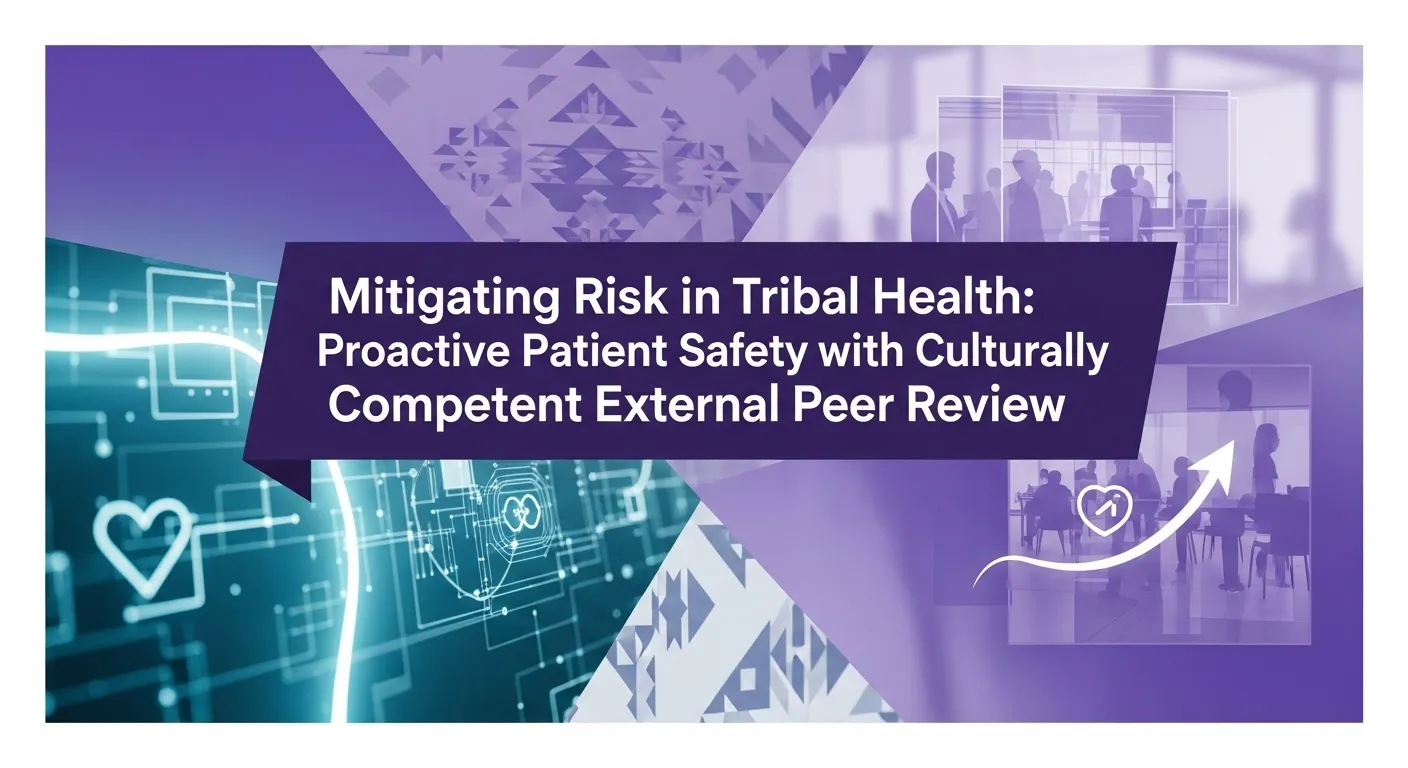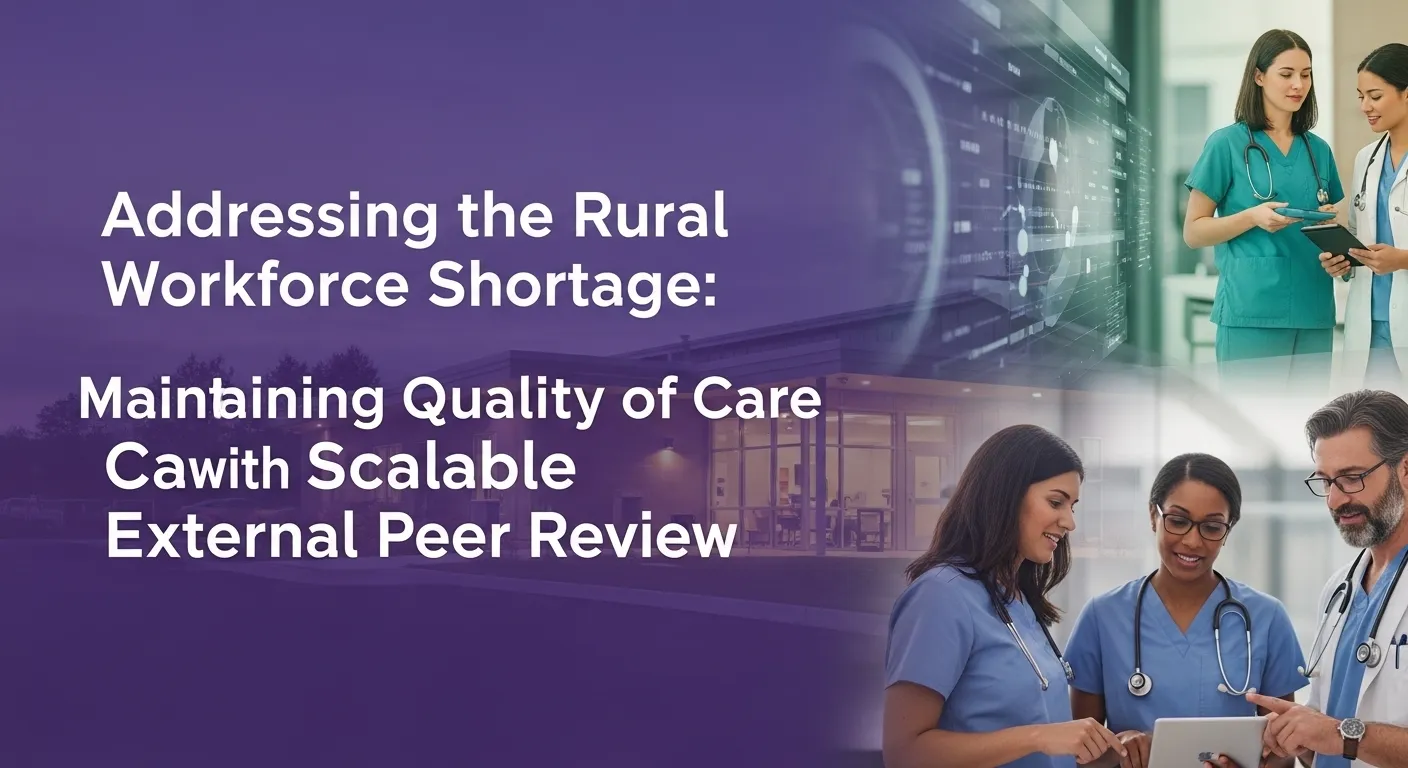

How to Calculate the Business Case for External Peer Review in FQHCs and CAH
Calculate your target cost for external peer reviews and build a business case for outsourcing. Try the interactive calculator now.
Scroll down to use the Interactive Calculator.
Federally Qualified Health Centers (FQHCs) and Critical Access Hospitals (CAH) face an ongoing challenge: how to meet quality and compliance requirements without overburdening clinical staff or sacrificing patient care. For many organizations, peer review remains a necessary—but often inefficient—internal process, pulling providers and administrators away from higher-value activities.
As staffing shortages, patient loads, and compliance demands grow, more quality leaders are asking:
What is the real cost of keeping peer reviews in-house—and when does it make sense to outsource?
This guide helps Chief Medical Officers, Quality Directors, and Compliance leads build a clear, CFO-friendly business case for external peer review by quantifying the costs of internal processes and providing target ranges when evaluating external solutions.
The Hidden Cost of Internal Peer Review
While internal peer reviews may appear “free,” they often come with high opportunity costs—especially when performed by revenue-generating clinical staff.
Let’s break down the true cost components:
- Clinician Time
Peer reviews typically take 1 to 1.5 hours per review, according to operational estimates from FQHC administrators and HRSA Chapter 10 guidance. For a physician seeing 2–3 patients per hour at an average reimbursement rate of $450–$500/hour, every review may represent $675–$750 in lost revenue. - Fully-Loaded Labor Costs
According to Medical Group Management Association (MGMA), the average fully-loaded cost for a primary care MD—including salary, benefits, taxes, and malpractice—is around $150–$170/hour. At 1.5 hours per review, that’s $225–$255 in direct expense, even if no revenue is lost. - Administrative Overhead
Most in-house review programs rely on clinical quality or compliance teams to manage logistics: gathering charts, scheduling committees, documenting results, and tracking deficiencies. Even for small organizations, this overhead often amounts to 0.5 to 2 FTEs, depending on volume. This translates to $100–$300+ per review in indirect labor costs.
Total Internal Review Cost: $1,000 or More Per Review
When you add these elements together, a single internal peer review can cost:
- $675–$750 in lost clinical revenue (opportunity cost)
- $225–$255 in MD compensation
- $100–$300 in administrative time
Estimated Total: $1,000–$1,300 per review
And that doesn’t include hidden costs like clinician frustration, burnout, or inconsistent follow-through due to turnover.
When External Peer Review Makes Sense
While some internal peer reviews are unavoidable—especially for daily or urgent feedback—external reviews are ideal when:
- Specialty expertise is not available in-house
- Bias needs to be reduced or eliminated
- Staff turnover disrupts review processes
- Operational consistency is required across sites
- Legal defensibility or compliance documentation is needed
The Joint Commission and Agency for Healthcare Research and Quality (AHRQ) emphasize the value of external objectivity and specialty-matched expertise in preventing harm events and promoting quality improvement.
What Should You Expect to Pay for External Review?
Pricing for external peer review varies based on reviewer credentials (MD vs. mid-level), specialty, and turnaround time. Across the industry, most reviews cost:
- $500–$800 per review for high-quality, credentialed reviewers
- Reviews at the lower end may involve generic templates or limited depth
- Premium vendors provide full reports, consistent turnaround (under 7 days), and HIPAA-compliant infrastructure
If you're comparing vendors, consider looking beyond price alone. Value-add features that justify higher price points include:
- Guaranteed turnaround time (5–7 days)
- Access to 700+ specialties or subspecialties
- Workflow automation (chart uploads, status tracking)
- Support for random chart pulls, BYOD (Bring Your Own Doctor) models, or recurring quarterly programs
- Integrated documentation for HRSA site visit readiness
Final Thoughts: Build the Case Before You Need One
For FQHCs and Critical Access Hospitals, peer review is no longer just a compliance checkbox. It's part of a broader effort to improve patient safety, retain talent, and reduce preventable risk.
If you're making the case to finance or executive leadership, quantifying the full burden of internal review—and offering credible external alternatives in the $500–$800 range—can be the key to unlocking support.

Mitigating Risk in Tribal Health: Proactive Patient Safety with Culturally Competent External Peer Review
External peer review offers Tribal Health Organizations unbiased, culturally competent assessments, reducing administrative burden, improving patient safety, and strengthening compliance documentation.
.png)
.png)

Value-Based Care for FQHCs: How External Peer Review Drives Better Outcomes and Sustainable Revenue
Medplace external peer review helps FQHCs thrive in value-based care. Gain objective insights, cut compliance risk, reduce admin burden, and boost quality, provider satisfaction, & revenue.
.png)
.png)

Addressing the Rural Workforce Shortage: Maintaining Quality of Care with Scalable External Peer Review
Combat rural healthcare shortages and maintain quality with scalable external peer review. Medplace offers objective, specialty-matched reviews, reducing burden and ensuring compliance.
.png)
.png)



.png)
.png)
.png)


.png)




.png)